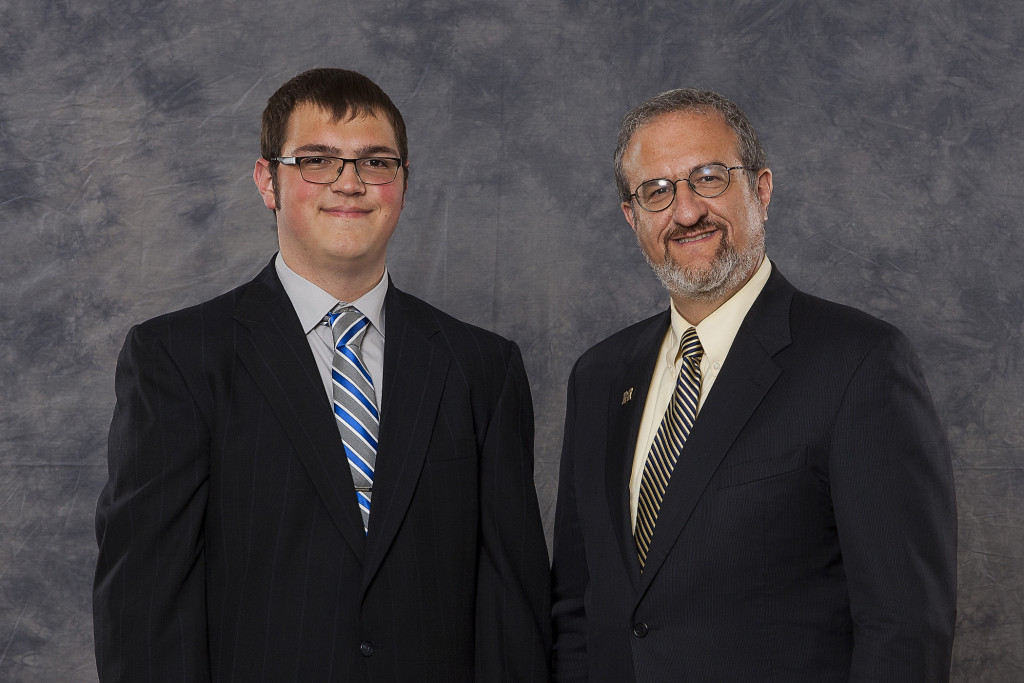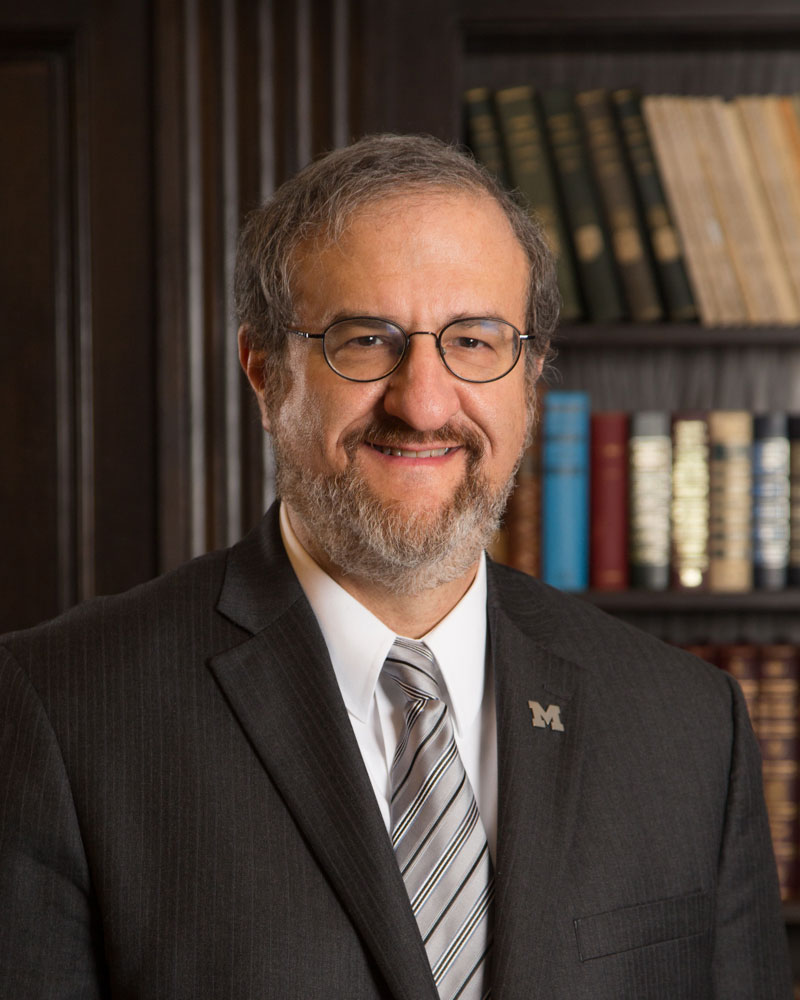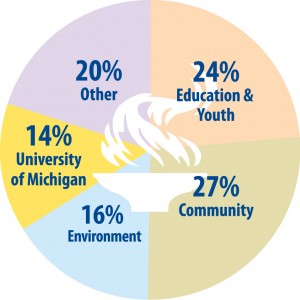 Twenty-six of the academic leaders and best from the Shiawassee County region are headed to the University of Michigan next fall with scholarships from the Cook Family Foundation. Among those recognized on May 12 by UM President Mark Schlissel was Laingsburg senior Nicholas Miller, this year’s recipient of the Bruce and Jacqueline Cook Scholarship. He is the ninth winner of this full tuition scholarship provided by the two alumni of the University.
Twenty-six of the academic leaders and best from the Shiawassee County region are headed to the University of Michigan next fall with scholarships from the Cook Family Foundation. Among those recognized on May 12 by UM President Mark Schlissel was Laingsburg senior Nicholas Miller, this year’s recipient of the Bruce and Jacqueline Cook Scholarship. He is the ninth winner of this full tuition scholarship provided by the two alumni of the University.
Nick Miller is a National Merit Scholarship commended student with a 3.96 grade point average. He is captain of the Laingsburg quiz bowl team and science olympiad team. An avid band member, Nick is a section leader as well as a trumpet soloist in the the jazz band. His career plan is to study epidemiology at Michigan leading to graduate study in public health.
In remarks as part of the scholarship recognition dinner, President Mark Schlissel stressed that the University of Michigan is a public university with a goal of serving academically talented students from throughout the state. He noted the strong scholarship and financial aid support the University gives to make UM the most affordable public university in the state. He also thanked alumni like Bruce and Jackie Cook for their support, and urged recent alumni to be advocates and recruit talented students to the University.
The Cook Family Foundation was formed in 1978 and provided one scholarship that year to the University of Michigan. The Foundation now offers a scholarship to all high school students from the Shiawassee region who are admitted to UM. More than 500 scholarships have been granted. The Bruce and Jacqueline Scholarship is funded separately from the Foundation.
This year’s recipients of scholarship to the University of Michigan include from Byron: Brianna Wells; from Chesaning: Trevor Andrews, Tori Turpin; from Corunna: Larissa Robinson-Cooper, Cassidy Schnepp, Scott Feldpausch; from Durand: Tristan Blackledge, Lucas Schaeffer; from Lainsgsburg: Kurt McEwan, Nicholas Miller, Antonia Vrana, Clayton Zimmerman; from New Lothrop: Spencer Wendling, Roen Wheeler; from Owosso: Brittney Crawford, Abigail Edwards, Thomas Horak, Joseph Jafri, Jordan Sowash; from Ovid-Elsie: Elizabeth Bisson, Gordon Johnson; and from Perry: Jordan Depew, Amelia Feuka, Marissa Frent, Brett Ivey, Miranda Lewis
You can learn more about the Foundation’s scholarships on the website’s scholarship tab


 New University of Michigan President Mark Schlissel will be coming to Owosso on May 12 to congratulate new students from the Shiawassee area who are attending the University in the fall of 2015. The dinner and reception is hosted by the Cook Family Foundation, which provides a scholarship to every local high school graduate who attends the University of Michigan.
New University of Michigan President Mark Schlissel will be coming to Owosso on May 12 to congratulate new students from the Shiawassee area who are attending the University in the fall of 2015. The dinner and reception is hosted by the Cook Family Foundation, which provides a scholarship to every local high school graduate who attends the University of Michigan.